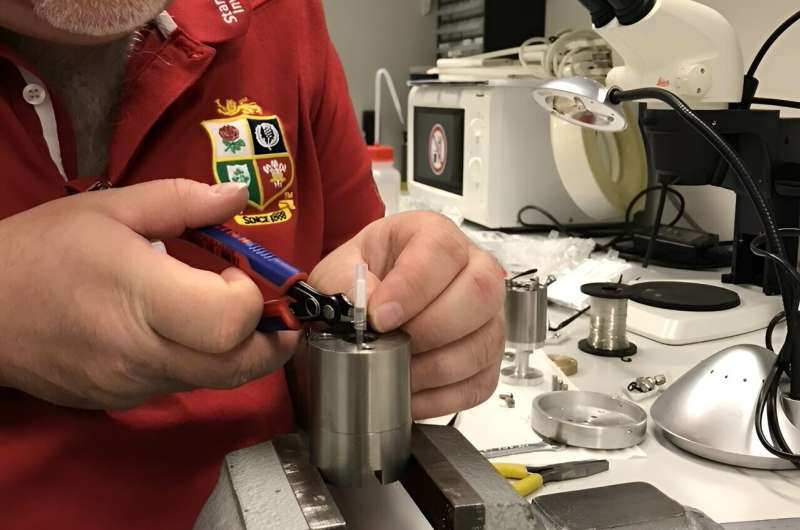This article has been reviewed according to Science X's editorial process and policies. Editors have highlighted the following attributes while ensuring the content's credibility:
fact-checked
trusted source
proofread
Structural geology study assesses potential effect of elastic differential stress on development of mineral fabrics

Earth is a stressed planet. As plates move, magma rises, and glaciers melt—just to mention a few scenarios—rocks are subject to varying pressure and compressional and extensional forces. The effect of these stresses on rock mineralogy and texture is of great interest to the tectono-metamorphic community. Yet the link between process and outcome remains elusive.
There are two possible states of stress: either all principal stresses are equal (lithostatic or hydrostatic pressure), or one prevails (differential stress). Both scenarios are ubiquitous in nature.
The conventional knowledge is that lithostatic pressure alone (without differential stress) is sufficient to affect thermodynamic equilibrium and thus prompt metamorphic reactions on its own. The energy stored in the system leads to a change in phase stability, and reactions occur to accommodate that according to bulk composition.
Metamorphic fabrics, such as lineation and foliation, require differential stress to develop instead. But how much differential stress is truly needed? Beyond elastic loading, there is no question—we know that mineral orientation and stresses are related. Whether reversible, elastic deformation is sufficient to prompt fabric development remains to be ascertained. This is a fundamental question because it is at the core of the role of stress in metamorphism.
Dr. James Gilgannon, a structural geologist currently conducting research as a postdoctoral scholar at the University of Edinburgh, set up a series of experiments to assess any potential effect of elastic differential stress on the development of mineral fabrics. The paper is published in the journal Geology.
His team's work fits into a larger picture emerging collectively from cutting-edge synchrotron experiments on the role of differential stress and elasticity in metamorphism and tectonics.
They dehydrated gypsum samples under different elastic stress states, and their experiments took place in a synchrotron line, so that sample changes could be documented in 4D. "The advantage of this technique is that you can see everything that is happening, whereas in nature rocks have very complex, hidden histories," explains Gilgannon.
What they saw is the early-onset development of a fabric orthogonal to the largest principal stress in a sample experiencing an elastic differential stress, long before accumulation of irreversible strain. And if the elastic term, usually neglected, is producing a fabric, this will condition whatever comes next.
He states, "Elasticity could be considered boring, but it is really exciting. It could be enough to produce an anisotropic texture, which would then control fluid flow."
There are still many questions to be answered. For one, it is still unclear how to differentiate elastic and permanent stress fabrics in nature. "I expect that many metamorphic rocks have patterns related to this small elastic stress—not the big permanent one," says Gilgannon. "But it might be the case that because the elastic stress is always present, it will be hard to deconvolve its contribution."
The next set of planned experiments will be at an even higher spatial resolution and will focus on what happens to sample fabric once the elastic stress is relieved.
More information: James Gilgannon et al, Elastic stresses can form metamorphic fabrics, Geology (2023). DOI: 10.1130/G51612.1
Provided by Geological Society of America




















